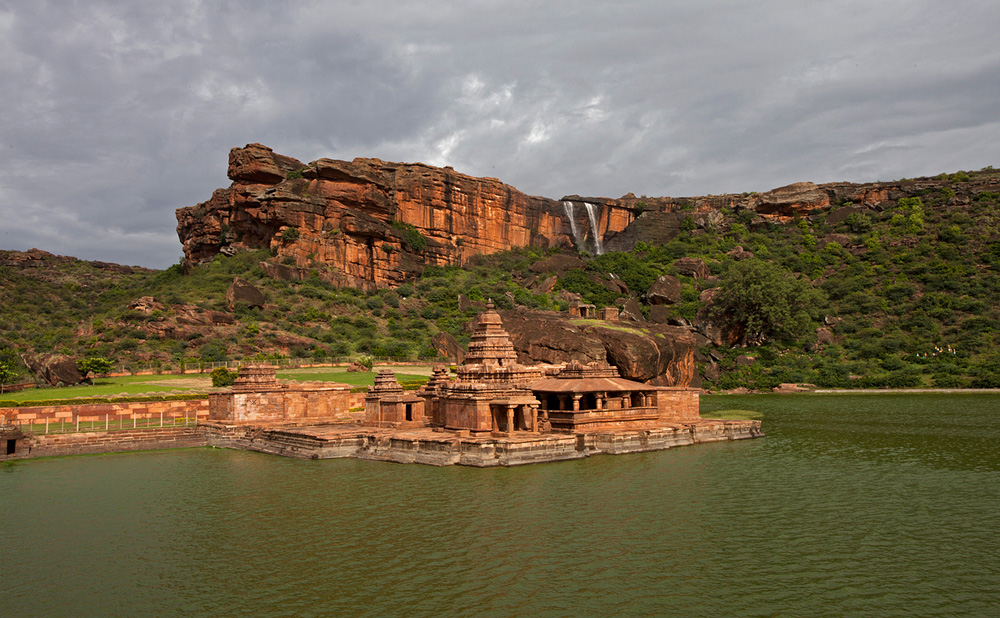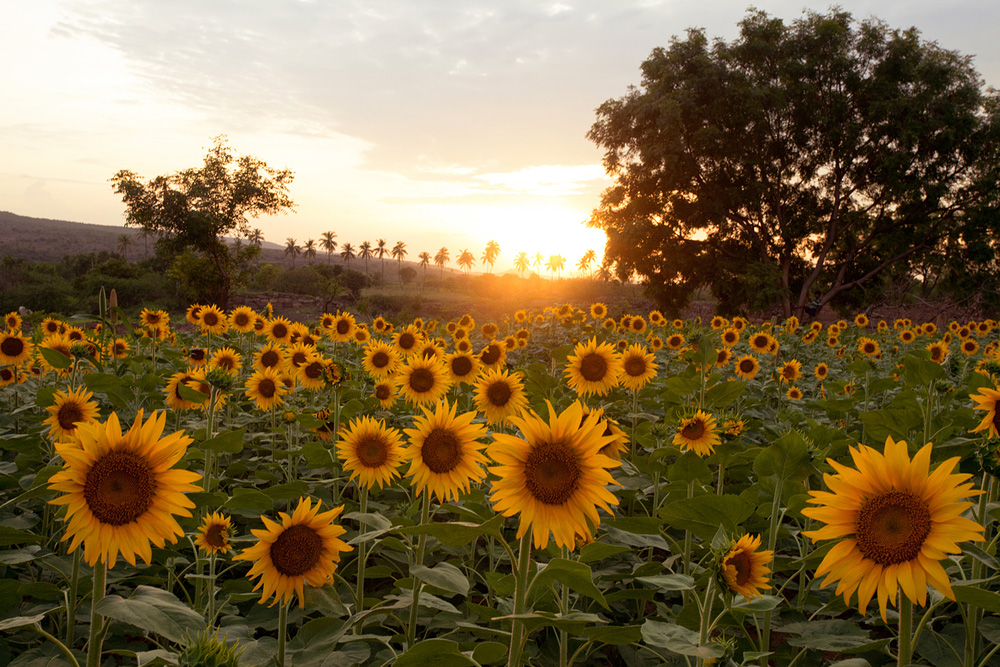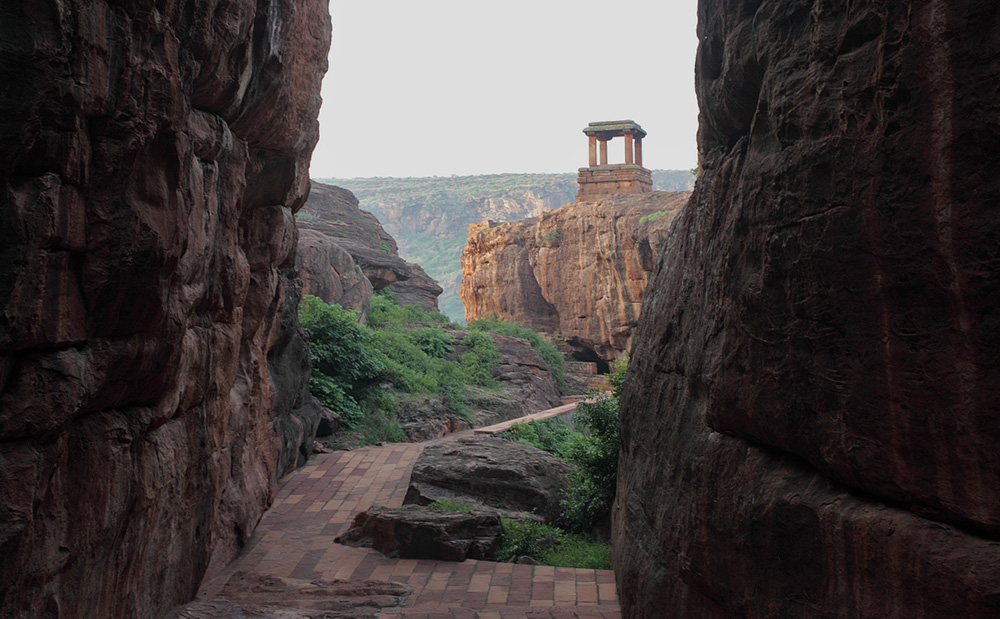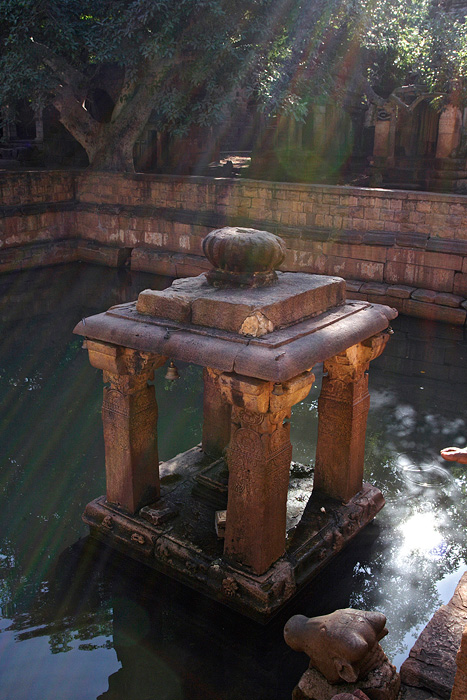When we announced our travel photography workshop to Badami (July 5 to 7), many of you were fascinated by the location but also had a lot of questions. Where is Badami located? What kind of place is this and how is it conducive for a travel photography workshop? Here is all the you would have wanted to know about beautiful Badami.
Where is Badami and how to reach Badami?
Badami is located in central Karnataka and is well-connected from Bangalore. Overnight direct train and buses are available. It should be easy to reach from Mumbai, Pune and Hyderabad as well.
Reaching Badami from Bangalore: Badami is 500km from Bangalore. Overnight buses and a train are available. Visit www.redbus.in to see bus schedule or www.irctc.co.in to see the train availability.
Reaching Badami from Mumbai and Pune: Badami is 600km from Mumbai and about 460km from Pune. To reach Badami from either of these cities, you can –
- take an overnight bus to Hubli (100km, 1.5 hours from Badami) and then take a cab or a bus to Badami
- take an overnight bus to Gadag (70km, 1.5 hours from Badami) and then take a cab or bus to Badami
Visit www.redbus.in see bus schedule.
Reaching Badami from Hyderabad: Badami is 400km from Hyderabad. To reach Badami, take an overnight bus either to Gadag or Bagalkot and then take a cab or bus to Badami. Visit www.redbus.in for bus schedule.
What is Badami like? Give us a feel of the place
Landscape and Habitat. Badami is a small town in the semi-arid plains of central Karnatka. Its surroundings are largely rural, with a population that is predominantly agrarian. Its a region where life is slow, basic, rustic and is faraway from large cities and industrial hubs.
The typical landscape of the region consists of small villages with a cluster of mud-houses. Bullock-carts, cows and haystack usually surround the houses. Agricultural land encircles the villages wherever there are traces of water available. Beyond the fields are open spaces and shrub jungles that spread until the boundary of the next village. For miles and miles, the pattern continues without any significant change. In some places, such as the eastern end of Badami town, the pattern is broken by red sandstone hills, usually dropping off swiftly to the plains in their edges.
The mostly rain-depended and partially irrigated land forces people to grow a limited set of crops like groundnuts and millet. People live a simple life and are always ready to talk to a passing stranger, and perhaps even offer a bitter-sweet cup of tea.
The area is completely dry and unbearably hot in the summer months. With the onset of monsoons, the shrub jungle turns green, parched streams get some water and the landscape wears a fresh look. Temperatures come down considerably, making life more bearable. It is in these months that sunflowers bloom in the fields, creating a vast yellow carpet on the earth.
Heritage. Badami’s claim to fame comes from its past. Between 6th and 8th century, the town served as the capital of Chalukya Kings who ruled a large area between Krishna and Kaveri. In those prosperous years, they built a large number of temples in the region, many of which have survived even today. While the town of Badami is known for its temples cut into sandstone cliffs outside the town, nearby Pattadakal is one of the early examples of temples created by finely carved stone. Aihole, an hour’s drive from Badami served as a school of architecture in those years, where you see dozens of small ancient temples spread all around the village. The temples of Aihole are a mix of several architectural styles from across India. Historians have famously called Aihole as the cradle of Indian architecture.
The town. Badami is a typical small town in the dusty plains of central Karnataka. Much of the action is in the one main-road, to either side of the bus-stop. At the edge of the town are tall sandstone cliffs flanked by a huge lake, where the well-known rock cut temples are located. Just below the rock cut temples, across the lake bund are ghetto-like dwellings where much of the population of Badami lives. The houses are densely packed, separated by narrow lanes barely accessible for a three wheeler. People are friendly and more often than not, it is easy to strike a conversation.
What are the attractions? What is there for a photographer?
Badami and its surroundings offer many and diverse photography opportunities. The sandstone cliffs and sunflower fields offer excellent outdoor photography opportunities. The villages and the towns offer plenty of street and people photography opportunities. There are many heritage sites strewn around the town, some of them set in very dramatic and photogenic locations. The diversity of photography opportunities makes Badami an excellent destination for a photographer. Here is a non-exhaustive list of opportunities and some images to go with it.
- Rock cut temples in the sandstone cliffs of Badami and the beautiful temples surrounding the large tank.
- A variety of ancient structures, some as monuments and some where tradition is still alive.
- Landscapes of sandstone cliffs/walls; sunflower fields
- Agrarian lifestyle, life in villages and small towns
Why Badami for a travel photography workshop?
Travel photography is a combination of multiple genres of photography. A travel photographer needs to understand and photograph multiple facets of a location, such as landscapes and environment, culture and heritage, people and living. Badami offers a diverse set of photography opportunities, which includes much of these.
Our travel photography mentors have explored the corners of Badami and its surrounding places, visiting the popular and not-so-popular sites in the region many times over and understanding the photography opportunities available. There may be many other places that offer photography opportunities in one genre, such as landscape, wildlife or heritage sites. But Badami is one of the few places that offers opportunities of multiple genres. It is so rich in photography opportunities that I could probably spend a month there and not have enough of it.
What is this travel photography workshop about?
This workshop is a lot about (a) portraying the best of a destination and bringing out its beauty (b) going beyond merely making beautiful images and go much higher to create photographs that speak, photographs that have an emotion, making powerful images that are speak your mind & heart. Here is a short glimpse of the course content. Visit workshop page for more details.
- Quick coverage of important camera controls and concepts necessary for this workshop
- Composition and lighting techniques
- Travel Photography
- scope and definitions
- research and homework in travel photography
- identifying subjects, environment and stories
- observation skills
- effectively portraying a location and its characters with your camera
- techniques to improve the quality of your travel photography
- travel photography and publishing – making your work known
- A primer to photographing Badami
- Telling a story with your photography
- introduction to the idea of telling stories with your camera
- defining and understanding the scope of a story
- making the story interesting
- Travel photography as an art
- Making images with compositions that speak your heart and mind
- creating images that have an impact on the viewer
- Field sessions in and around Badami
- Intensive image reviews
Why should I join this workshop?
We strongly believe that this workshop will change your outlook towards photography forever. At the end of this workshop, you will no longer see your camera merely as a tool to record visuals in front of you, but a powerful instrument that can tell stories, convey many things that words fail to speak, and be able to create work that can move the viewers.
Visit travel photography workshop at Badami for more details. Reach us at the contact details given on the page if you have any questions.
More Reading on Badami
- Badami – a travelogue by Arun Bhat, our mentor for this workshop. This article was published in a national monthly.
- A series on experiences of travelling in Badami by Arun Bhat, our mentor for this workshop.
I have some more questions..
Do contact us. We will be more than happy to answer your questions. 🙂














